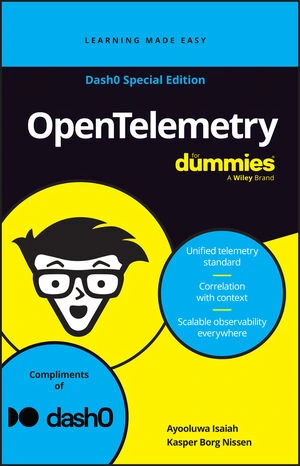In this article you will learn:
- What OpenTelemetry-native means — and why it matters
- How OpenTelemetry solves the chaos of fragmented telemetry
- How to get started with OpenTelemetry-native tools
- The benefits of adopting OpenTelemetry-native observability
Modern software systems are more complex than ever. A single customer request might pass through a dozen microservices, multiple databases, third-party application programming interfaces (APIs), and serverless functions — all deployed across hybrid or multi-cloud environments.
This is where OpenTelemetry observability comes in.
What does OpenTelemetry-native mean?
OpenTelemetry (OTel) is an open-source project that provides a standardized way to collect, structure, and transmit telemetry data — including logs, metrics, traces, and (increasingly) profiles and real user monitoring (RUM) data.
But being OpenTelemetry-native means going beyond simply “supporting” OTel data. Many legacy observability platforms can ingest OpenTelemetry Protocol (OTLP) data, but convert it into their own proprietary formats, losing valuable context along the way.
- Every signal follows a community agreed upon schema and naming conventions
- Logs, metrics, traces, profiles, and RUM data automatically share context like
service.name,deployment.environment.name, andtrace_id - Your data remains portable across tools without vendor lock-in
It also enforces semantic conventions and consistent resource attributes, so teams speak the same language and dashboards don’t break when labels change.
Solving the chaos of fragmented telemetry
OpenTelemetry-native observability solves one of the biggest problems in modern software operations: fragmentation.
- Trace a customer request from the frontend through every backend service it touches
- Correlate a spike in errors (logs) with a specific code deployment (traces) and its impact on response times (metrics)
- Standardize telemetry collection across teams and tools, reducing silos and duplicated effort
This shift transforms observability from a reactive firefighting tool into a proactive capability for improving performance, reliability, and customer experience. Critically: focus on signal, not volume — drop low-value noise early, enrich what remains, and sample traces to balance insight and cost.
How to get started with OpenTelemetry-native tools
The easiest way to get started is to add auto-instrumentation to a test service using the OpenTelemetry software development kit (SDK) or agent for your language. Then deploy the OpenTelemetry Collector to route the data to an OpenTelemetry-native backend.
Platform teams can define a paved path (default Collector configurations, auto-instrumentation, default exporters, and sampling/redaction policies) so developers get great telemetry by default.
The bottom line: Reaping the benefits
OpenTelemetry-native isn’t just a new toolset — it’s a mindset. It’s about treating observability as a first-class capability, not an afterthought.
By adopting OpenTelemetry-native observability, you’ll unlock clearer insights, faster troubleshooting, and a future-ready foundation for your business.







